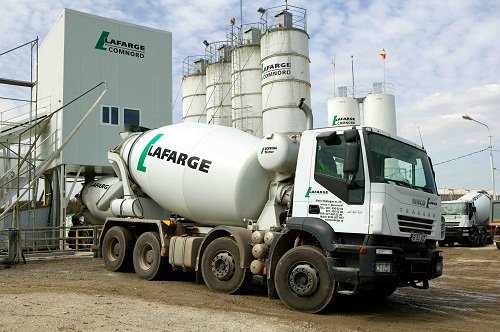The board of Lafarge Africa Plc, on Monday published its unaudited financials for the half-year ended June 30, 2019, which showed a return to profit ways as promised when the company sold its South African subsidiary to Lafarge Holcim, its parent company, in exchange for an inter-company loan (READ MORE).
While sales revenue for the period stayed flat, profit after tax came strong, helped by the N17.401bn reported in the three months ended June 30, 2019, representing a significant jump from just N639.093m reported in the corresponding period of 2018. The profit for the period between April and June 2019, according to a breakdown of the result, was slightly lower than the N21.845bn recorded by the group for the entire 12 months of 2018.
Revenue for the half-year stood at N160.296bn, slightly lower than the N162.291bn in the first two quarters of last year; the bulk of which was the N133.554bn from the sale of cement, as against N132.216bn in the previous half-year; while aggregate and concrete contributed N24.47bn, a drop from N27.744bn; just as admixtures and products added N2.271bn from N2.331bn.
Cost of sales dropped to N119.55bn, from N123.329bn; following which gross profit inched slightly from N38.961bn to N40.745bn; with variable costs accounting for N76.254bn from N76.219bn; followed by production costs at N19.73bn, dropping from N20.273bn; while depreciation rose to N14.991bn from N11.0bn. Maintenance costs dropped to N6.297bn from N9.853bn; just as distribution costs dropped to N2.049bn from N5.923bn in 2018; followed by amortization and impairment oN29.642bn from N29.024bn; gas costs stood at N16.968bn from N13.139bn; just as power cost dropped significantly to N3.843bn from N9.617bn. The group also spent N25.8bn on raw materials and consumables, from N24.438bn.
Selling and marketing expenses dropped marginally from N2.769bn to N2.457bn, the lion’s share of which was the N1.72bn spent on other selling and marketing expenses, after dropping from N2.181bn. Administrative expenses fell to N15.937bn from N19.956bn, with admin expenses gulping N13.17bn from N15.022bn; followed by depreciation, N1.203bn from N405.873m; and technical service fees, N1.564bn from N4.527bn. Other income (being scrapped and other miscellaneous income) also fell from N106.638m to N38.993m. Impairment loss on trade dropped to N2.088m from N5.542m. This resulted in operating profit rose to N22.387bn from N16.336bn.
Finance income stood at N989.652m, a drop from the previous N1.033bn, buoyed by interest income on current accounts of N819.2m from N596.394m; other income, 150.684m, up from N22,000; and N170.406m interest income on loan receivables, which dropped from N286.406m. Finance costs slipped from N23.715bn to N14.057bn, driven by the Nq13.412m interest on borrowings, which fell from N16.041bn; followed by the N964.657m interest on bank overdraft, down from N1.489bn. Net finance cost recognized in the profit or loss, therefore, dropped to N13.067bn from N22.682bn
Profit before tax, stood at N9.274bn, as against the previous half-year’s N6.345bn loss; while after profit came to N9.008bn from a loss of N3.902bn; following the tax expense of N265.163m, as against the previous N2.443bn tax credit in the period under review. Net profit for the period translated to Earnings Per Share of N56, compared to the previous N45 loss per share.
Trending Today
Menu








